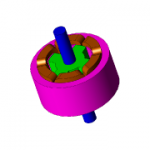Overview
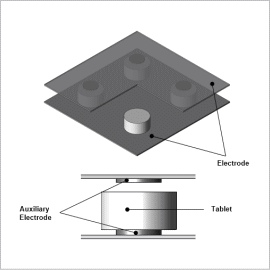
To raise the resin temperature, a high-frequency preheater using dielectric heating is used.
The electrodes of the high-frequency preheater consist of parallel plate electrodes and roller electrodes. The parallel plate electrodes are suitable when there are many heating materials, and by using auxiliary electrodes it is possible to control the range where temperature is raised. Since the temperature distribution is dependent on for example the shape of the auxiliary electrodes, it is necessary to check whether the target temperature is reached in a range containing the high temperatures of interest. With FEA, it is possible to visualize the temperature distribution inside a material which is difficult to actually measure, making evaluations easy.
In this example, a use case evaluating the influence on the temperature distribution of materials (tablets) with and without auxiliary electrodes is presented.
Positional Relationship Between a Tablet and Its Associated Electrodes
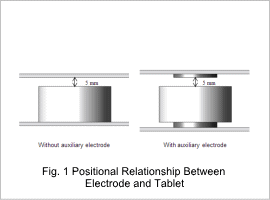
The generated electric field is affected greatly by the distance between the electrodes. The distance between an electrode and the tablet is fixed whether or not an auxiliary electrode is used.
Electric Field Loss Density Distribution
The dielectric loss density distribution is shown in Fig. 2, and the electric field strength distribution is shown in Fig. 3.
From Fig. 2, it can be seen that when there is no auxiliary electrode the loss on the side surface (perpendicular to the radius) is high, and when there is an auxiliary electrode the loss toward the center radially is high.
From Fig. 3, it can be seen that the electric field concentrates toward the center radially with an auxiliary electrode. The dielectric loss is affected by the physical characteristics, frequency, and electric field. In this use case since the physical properties and frequencies are the same with and without an auxiliary electrode, the difference in the dielectric loss distribution with and without an auxiliary electrode can be said to be due to the difference in the electric field strength distribution with and without auxiliary an electrode.
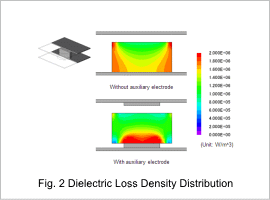
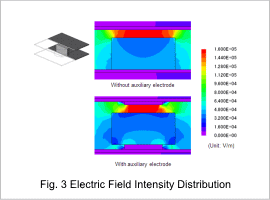
Temperature Distribution
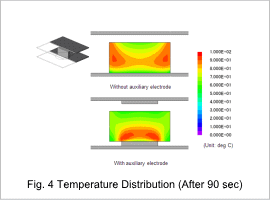
Differences also appear in the temperature distribution with and without an auxiliary electrode. From this it can be seen that with an auxiliary electrode it is possible to concentrate greater heat near the center of an electrode extending the greater heat area to the center of the tablet.

